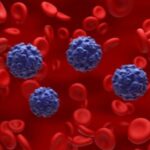
General information
Per the US Centers for Disease Control and Prevention (CDC)1, parvovirus B19 is a human respiratory viral illness that is typically very mild in healthy people but can cause more severe complications in those with underlying blood disorders or weakened immune systems. The rash-associated illness caused by the virus is called Fifth Disease, or Erythema Infectiosum. While parvovirus B19 does not usually impact pregnancies, the virus can spread to the fetus and can lead to a small increase in miscarriage risk or other complications.1 As of August 13, 2024, the CDC alerted the public of increased parvovirus B19 activity in the United States.
Virology & Relevance to Environmental Hygiene
Parvovirus is a small, nonenveloped, single-stranded DNA virus. The lack of a lipid envelope, plus its very small size, makes it more resistant to physical inactivation via chemical disinfection.2 Because parvovirus B19 is well understood, it is not currently considered an emerging or reemerging viral pathogen per EPA and does not appear on EPA’s List Q. Parvovirus does not have its own EPA list of effective disinfectants. Thorough cleaning & disinfection of high-touch surfaces is important to prevent the spread of infection, including respiratory viral illnesses like parvovirus B19.
Symptoms
Parvovirus B19 most commonly causes fifth disease, a mild rash illness that usually affects children, resembling a rosy facial rash also known as “slapped cheek.” Adults can get infected with parvovirus B19, too.
Other much less common symptoms of parvovirus B19 infection include painful or swollen joints (polyarthropathy syndrome), which is more common in adults, and severe anemia (a condition in which the body doesn’t have enough healthy red blood cells). In rare cases, some of these symptoms can persist for a long time.
Transmission
Parvovirus B19 spreads through contact with respiratory secretions, such as saliva, sputum, or nasal mucus, when an infected person coughs or sneezes. Parvovirus B19 can also spread through blood or blood products as well as mother to fetus. In parts of the world with changing seasons, people tend to get infected with parvovirus B19 more often in late winter, spring, and early summer. Outbreaks of parvovirus B19 infection occur about every 3 to 4 years.
Per CDC1, a person is most contagious during the first few days of symptoms. They are unlikely to be contagious after they get later symptoms such as rash and joint pains. It is usually safe to go back to work or school after the rash appears. Some people may spread the disease for longer periods of time, including those with anemia and weakened immune systems.
Since parvovirus B19 only infects humans, a person cannot get the virus from a dog or cat. Also, dogs and cats cannot get parvovirus B19 from an infected person. The type of parvovirus affecting animals is a different strain.
Diagnosis
Blood tests and PCR tests are used to diagnose parvovirus B19 infection but can be challenging for providers to interpret.3 Testing is generally not performed as most persons recover and the illness is very mild (similar to the common cold). Persons concerned with their symptoms should talk to their healthcare providers, particularly if they are at higher risk. The blood test may be particularly helpful for pregnant women who may have been exposed to parvovirus B19 and are suspected to have fifth disease.
Healthcare transmission-based precautions
In healthcare settings, droplet and standard precautions are recommended for suspect and confirmed parvovirus B19 cases. Refer to the Guideline for Isolation Precautions: Preventing Transmission of Infectious Agents in Healthcare Settings (2007) for specific information. Facilities should refer to their infection prevention and control policies for specific personal protective equipment (PPE) requirements, but generally a facility-issued facemask and eye protection are recommended.
Prevention
There is no vaccine or medicine that can prevent parvovirus B19 infection. You can reduce your chance of being infected with parvovirus B19 or infecting others by:
- washing hands often with soap and water
- covering mouth and nose when coughing or sneezing
- not touching eyes, nose, or mouth
- avoiding close contact with people who are sick
- pregnant healthcare providers should consult with facility-specific infection prevention policies, as reassignment may be indicated therein
- staying home when sick or experiencing symptoms of infection (fever, headache, cough, sore throat, rashes, etc.)
- take steps for cleaner air
Are environmental surfaces a concern?
Like many respiratory viral illnesses, surfaces contaminated with infectious particles can spread the disease. CDC recommends frequent cleaning and disinfection of high-touch surfaces.
Considerations for environmental cleaning & disinfection
As mentioned above, parvovirus B19 has not been added to EPA’s List Q of emerging viral pathogens, nor does it have its own EPA list of select registered disinfectants. It is not uniquely addressed in CDC’s Environmental Infection Control Guidelines. Therefore, standard cleaning and disinfection procedures should be followed, with attention to label claims for small, nonenveloped viruses.
Whenever feasible, select EPA-registered healthcare disinfectants with parvovirus pathogen kill claims (note that animal strains are typically tested over human strains). These claims are sometimes found on the container label but can be verified on the EPA Master Label, using the product’s EPA registration number.
If a disinfectant does not have a specific parvovirus pathogen kill claim, it is best to identify other small, nonenveloped viruses on the label. Be sure to check if different dilutions and contact/wet times are required for small, nonenveloped viruses. In veterinary guidance, quaternary ammonium compounds are discouraged, and Accelerated Hydrogen Peroxide® products (i.e., Oxivir®) are preferred.4 If no small, nonenveloped pathogens are listed, Diversey recommends using a product with sufficient small, nonenveloped pathogen kill claims.
Diversey portfolio options are listed in the table below. For pathogen efficacy questions, contact your disinfectant manufacturer.

References
- https://www.cdc.gov/parvovirus-b19/about/index.html
- https://www.epa.gov/pesticide-registration/disinfectants-emerging-viral-pathogens-evps-list-q
- Cennimo, D et al. March 2024. Parvovirus B19 Infection Workup. Available at https://emedicine.medscape.com/article/961063-workup.
- https://www.aaha.org/wp-content/uploads/globalassets/05-pet-health-resources/virox_booklet24.pdf

